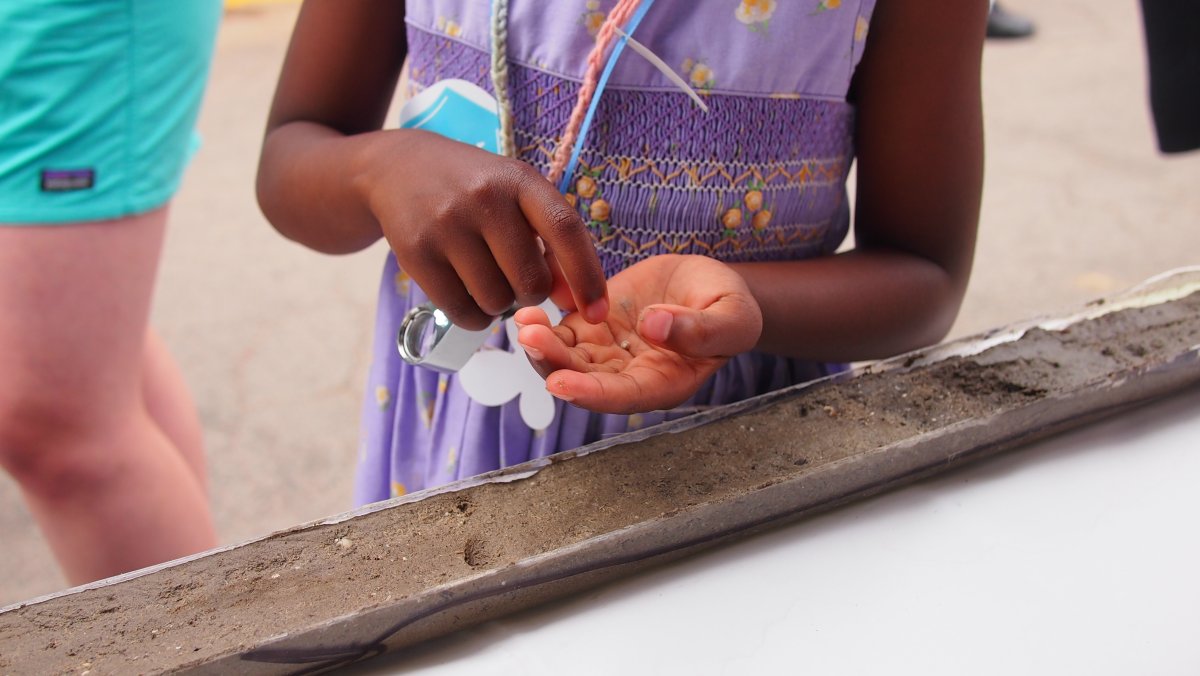Outreach and Diversity
Supporting Broader Impacts for the scientific drilling and coring community
The CSD Facility personnel conduct outreach activities, work to broaden participation of underrepresented groups, and develop educational materials and best practices. We also provide consultation and collaboration to help community members develop and execute better outreach, diversity, and education activities for their own projects and proposals.
Please contact Facility staff to discuss your needs and ideas, and browse this page to learn about past and ongoing projects with CSD Facility involvement.

The CSD Facility is part of the School of Earth & Environmental Sciences at the University of Minnesota. Facility personnel are members of the College of Science and Engineering Diversity & Inclusivity Alliance, a group comprised of students, faculty, postdoctoral researchers, staff, and alumni from throughout the college. The goal of this Alliance is to improve the college's climate through advancement and practice of diversity, equity and inclusion (DEI).
+
Broadening Participation in the Geosciences
The geosciences have poor diversity, even among STEM fields, awarding far fewer degrees to members of nonwhite racial and ethnic groups than their proportion in the US population. The field also faces challenges in representation with respect to gender, gender identification, sexual orientation, physical ability, active military and veteran status, socioeconomic status, family educational history, and regional disadvantage. All of these facets of diversity must be addressed in order to develop and foster an inclusive environment that supports the recruitment, retention, and advancement of persons currently underrepresented in the geosciences.

+
Public Outreach and Informal Education
The CSD Facility enhances public engagement with the geosciences via activities and talks at public events and museums, through the production of media materials, and by the development of products of interest to citizens outside the geosciences. Our involvement in the Geoscience Alliance, and support for production of short films such as A Human Climate are just two of the ways we engage. The CSD Facility also works in partnership to leverage the many activities already conducted by other groups and institutions while striving to go beyond simply “preaching to the choir.”

+
Community-Driven Research
When stakeholders are included in the process of developing research questions, projects benefit in several ways, including improved trust in research results and improved community engagement (Pandya, 2014, Ch. 4, Future Earth). Such community-driven research (CDR) strategies have been employed in medical research for a number of years, and the CSD Facility advocates for increasing their use in the geosciences.
Coring and drilling projects are usually focused on a location or region, and often on its history, providing ample points of intersection to entrain stakeholders in the area as a part of project Broader Impacts. Researchers must endeavor to meet early and often, in person if possible, and to genuinely try to learn what questions local people (indigenous communities, lake associations, resource managers, park rangers, etc.) have about the site that might be included in the planning and budget for the project.
Such dialogues can help demonstrate that local communities and governments are more than just the authorities issuing the permits, or in cases of communities with underrepresented minority groups, more than just a diversity box to be checked.
Our first experience with CDR came from the NSF-funded Manoomin project, in which community leaders and resource managers of the Fond du Lac Band of Ojibwe determined the research questions and how the education and research would be carried out, which led to a remarkably successful and ongoing collaboration with UMN (CSD Facility and The National Center for Earth-surface Dynamics) and to numerous other projects with other Tribal organizations.

+
Partnership with Non-Academic Institutions
Core-based research and support is a natural fit for collaboration with agencies such as Tribal and state resource management and environmental departments, park managers, watershed districts, lake associations, and others.
We work closely with these institutions to design research projects in the field and in the lab, to mine previously collected samples and data, and to develop new knowledge and skills. Because such institutions are often closely linked to the communities around them, we welcome broader community involvement in these discussions and projects.

